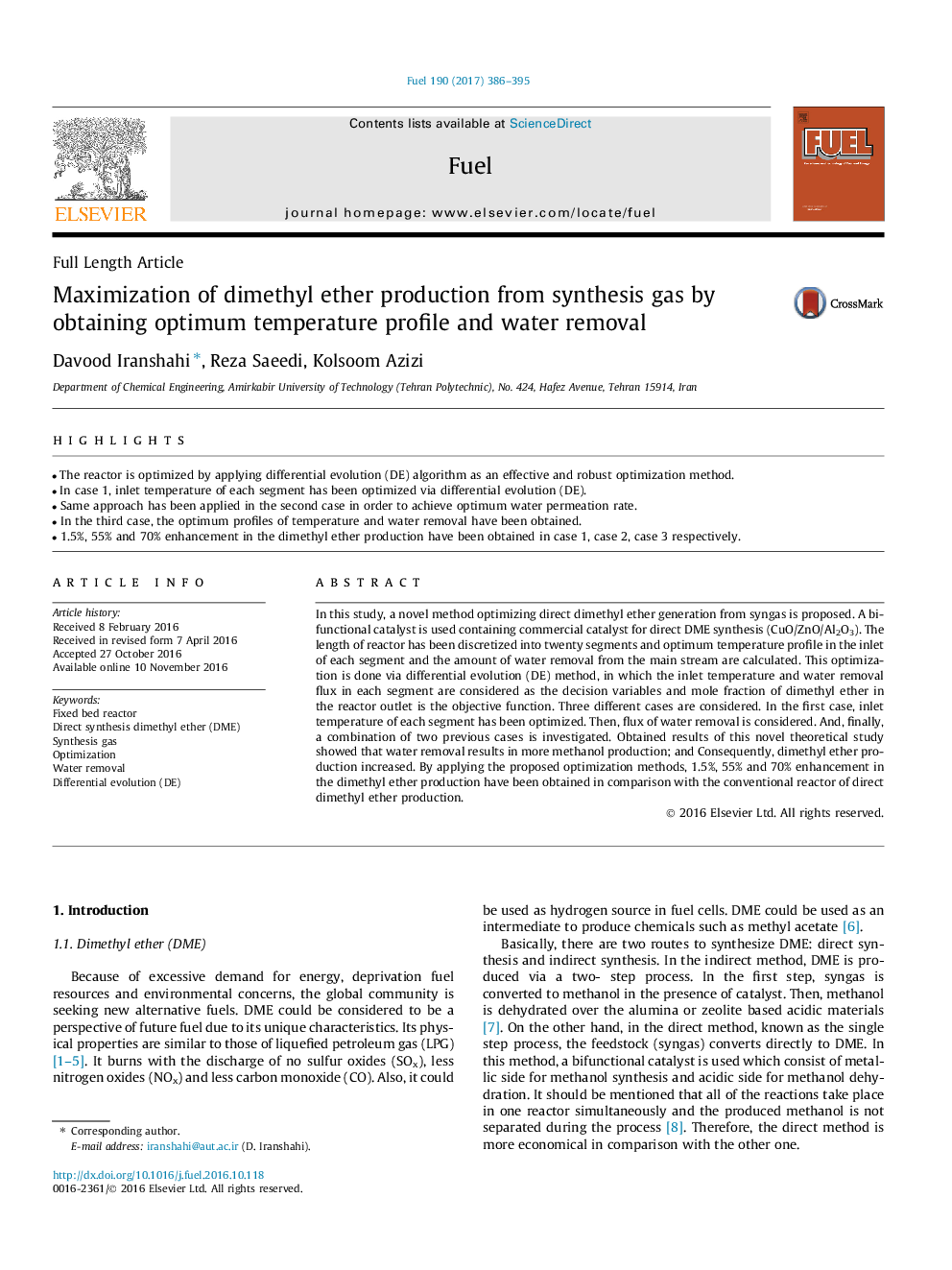| Article ID | Journal | Published Year | Pages | File Type |
|---|---|---|---|---|
| 6475626 | Fuel | 2017 | 10 Pages |
â¢The reactor is optimized by applying differential evolution (DE) algorithm as an effective and robust optimization method.â¢In case 1, inlet temperature of each segment has been optimized via differential evolution (DE).â¢Same approach has been applied in the second case in order to achieve optimum water permeation rate.â¢In the third case, the optimum profiles of temperature and water removal have been obtained.â¢1.5%, 55% and 70% enhancement in the dimethyl ether production have been obtained in case 1, case 2, case 3 respectively.
In this study, a novel method optimizing direct dimethyl ether generation from syngas is proposed. A bi-functional catalyst is used containing commercial catalyst for direct DME synthesis (CuO/ZnO/Al2O3). The length of reactor has been discretized into twenty segments and optimum temperature profile in the inlet of each segment and the amount of water removal from the main stream are calculated. This optimization is done via differential evolution (DE) method, in which the inlet temperature and water removal flux in each segment are considered as the decision variables and mole fraction of dimethyl ether in the reactor outlet is the objective function. Three different cases are considered. In the first case, inlet temperature of each segment has been optimized. Then, flux of water removal is considered. And, finally, a combination of two previous cases is investigated. Obtained results of this novel theoretical study showed that water removal results in more methanol production; and Consequently, dimethyl ether production increased. By applying the proposed optimization methods, 1.5%, 55% and 70% enhancement in the dimethyl ether production have been obtained in comparison with the conventional reactor of direct dimethyl ether production.
